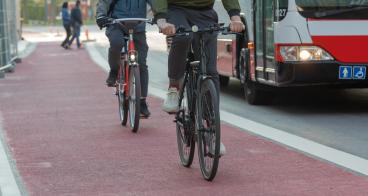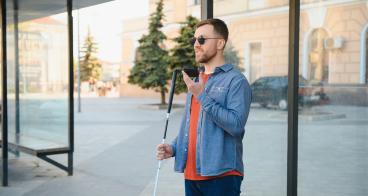Improving cycling accessibility for an ageing population in Bacău, Romania

The Challenge
As cities around Europe shift towards adopting more sustainable means of urban mobility, there’s growing awareness of the importance of making sure vulnerable groups aren’t left behind. Bacău in Romania is no exception. In Romania, over-65s make up 20.3% of the population, and with this number expected to rise, ensuring safe and accessible mobility for all residents is vital for maintaining a healthy ageing population.
Bacău’s Health, Culture and Education Bureau sought to improve user safety in traffic as part of the city’s drive to make sustainable mobility more accessible for its elderly citizens.
“We knew from our research that there was an issue with how elderly residents moved around the city,” said Mihai Mariutei from the city’s Health, Culture and Education Bureau. “They weren’t using public transport as much as we would have liked. Around 70% were relying on their vehicles to go from point A to point B.”
Finding ways to attract and encourage elderly drivers to switch to bikes was therefore a key part of the mobility puzzle.
The Solution
Bacău enlisted the help of Hilo EV through EIT Urban Mobility’s RAPTOR (Rapid Applications for Transport) programme to address these challenges.
The UK-based startup Hilo EV deployed IRIS (Intelligent Road Illumination System) to inspire and include elderly citizens, helping them feel confident getting around town with safer, more active modes of transport.
IRIS is an intelligent illumination safety system that can be installed on a bike, or other means of mobility, using tiny cameras that work with visual AI to detect pedestrians, road users or other potential hazards around the user.
IRIS can identify hazards and react with audio and visual alerts; including lights that flash different colours and in different sequences to make the user and others around them more aware of their surroundings.
Keeping IRIS compliant with the laws and regulations of different countries or regions, Hilo is also able to adapt how the lights behave according to the location of the unit.

Making an impact
Following the adoption of IRIS, around 50% of users said it made them feel much safer, and 85% expressed a strong interest in cycling with it.
Bacău also sees the pilot as a boost to its ongoing efforts to popularise cycling culture and expects IRIS to encourage elderly citizens to shift from cars to electric bikes, thanks to increased visibility and safety. That shift in turn can increase social inclusion, improve health outcomes and enhance quality of life as people move to more active forms of mobility.

Lessons learnt
Following the success of the pilot, Hilo plans to improve IRIS further to be even more engaging for users, as well as more adaptable for suitability on more modes of transport.
There is potential for IRIS to collect valuable safety data for municipalities and urban planners so they can feed into ongoing safety improvements in urban mobility infrastructure.
“If there are certain areas of the city where lots of alerts are detected, we can then provide that information back to the city so that they can become more aware of where the real hotspots are in terms of close proximities or dangers,” said Robin Harris, Co-founder and CEO of Hilo.
Additionally, Hilo wants to leverage the IRIS camera system to record safety incidents to help build a rich knowledge-base around where a city’s mobility risks are and how they occur, so local authorities can draw evidence-based lessons.






